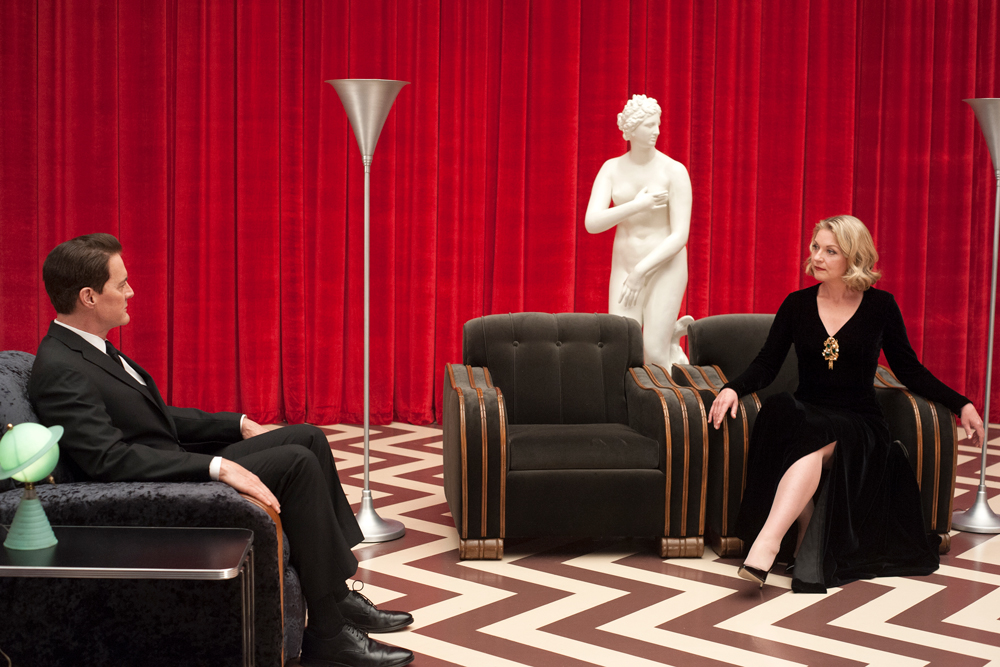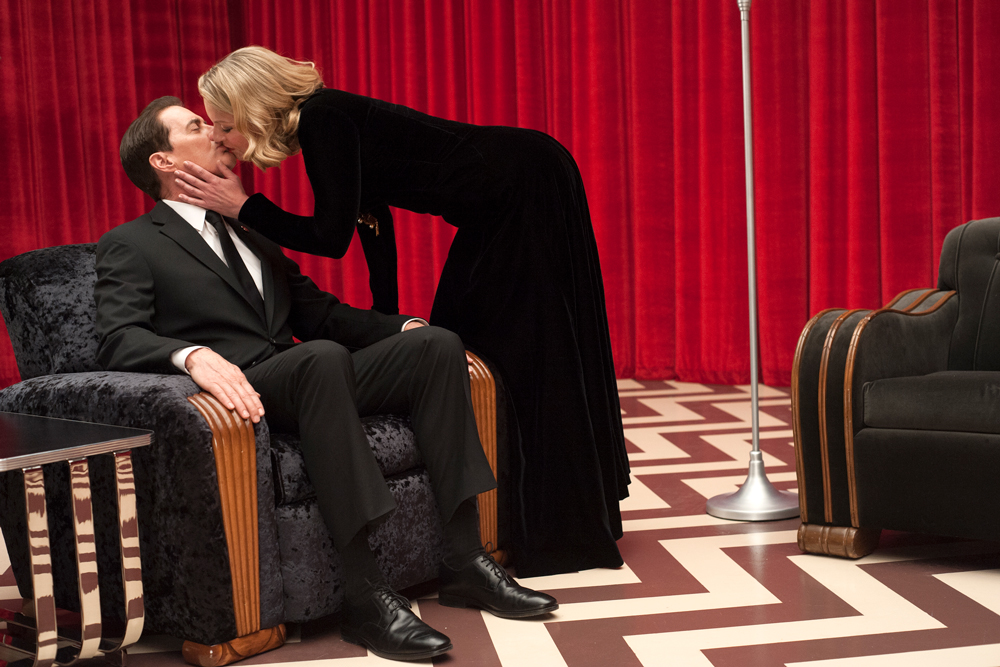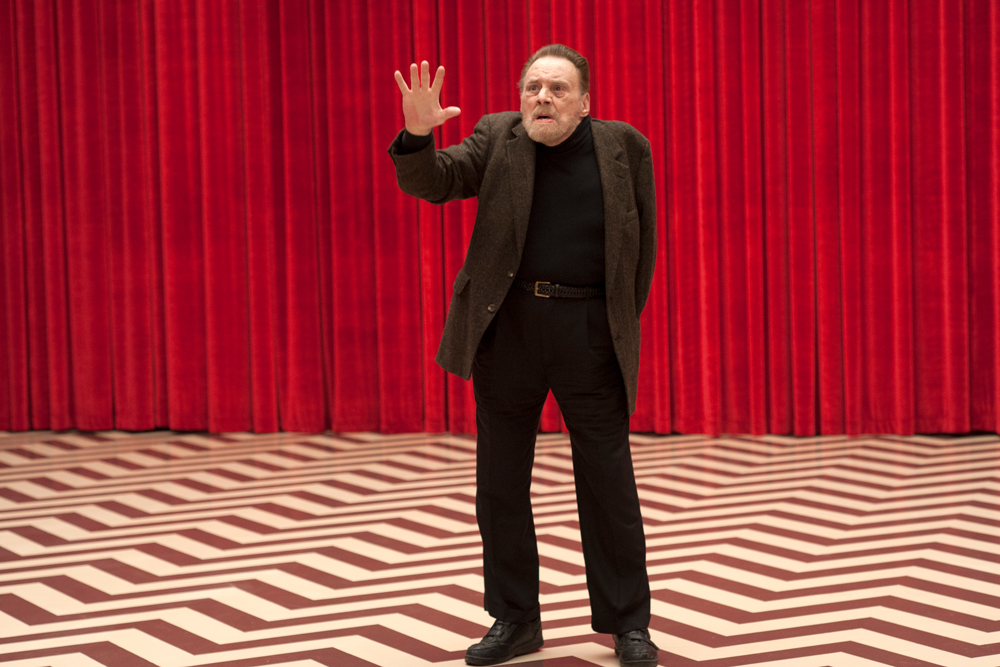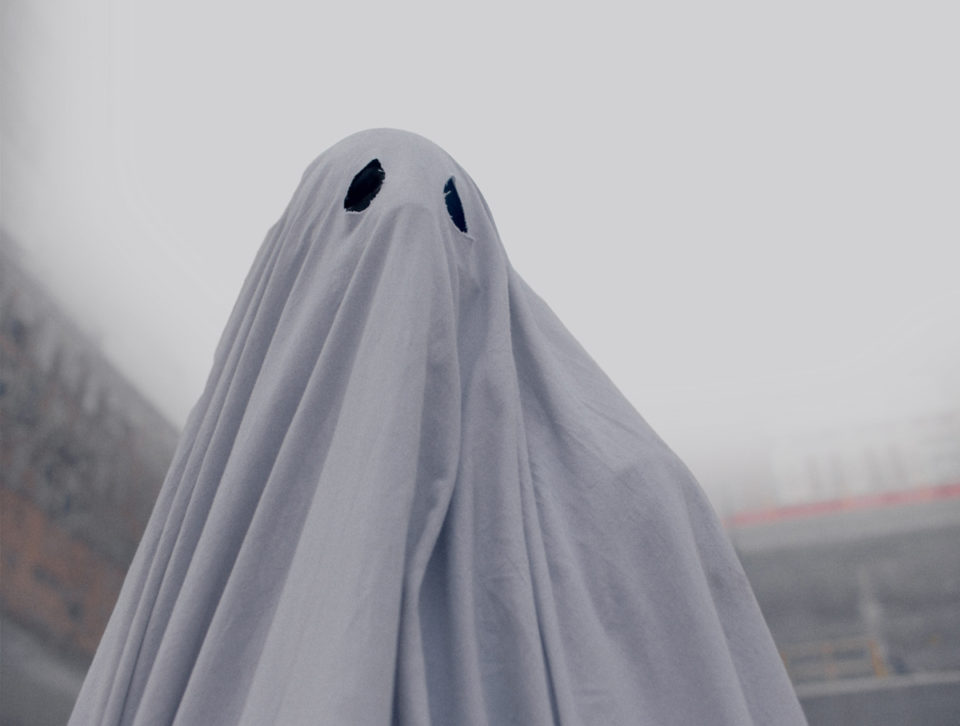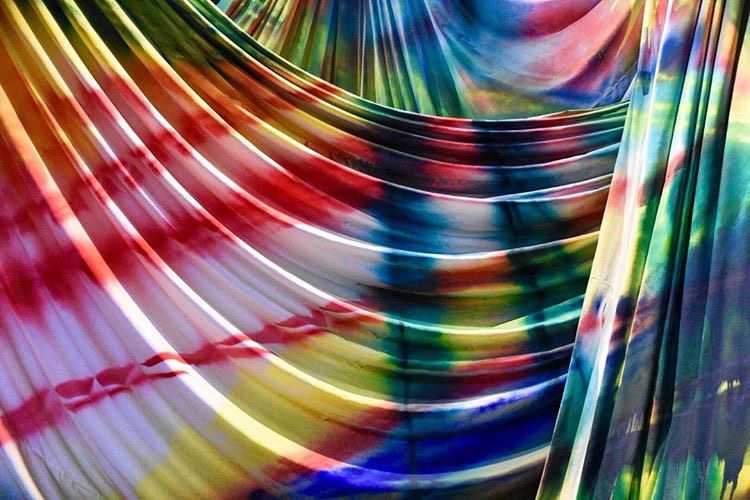In his book, This is Modern Art, Matthew Collings wrote that all the great, mythical artists have changed what we think art can do. David Lynch did it in 1990, and again this year, with Twin Peaks, an art-house noir series in a small American town.
The first series promised and then evaded an answer to the question: Who killed homecoming queen Laura Palmer? The second, building on the absurdist and nightmarish ground of the first, picks up on whatever happened to our hero, the lantern-jawed FBI Special Agent Dale Cooper when he disappeared into a netherworld place called the Black Lodge during what can only be termed an investigation into the presence of evil.
What Lynch did to the television medium was just as unsettling. Lynch began auteurist television before we even knew what that was, pioneering a radically artistic approach to long-form series making that would take two decades to bear fruit under brands like HBO and Netflix today. Back in 1990, however, it was hard to know why a major Hollywood director like Lynch – renowned for films like Eraserhead, The Elephant Man and Blue Velvet – would even bother with television as a medium when the first series began.
Only his trademark strangeness and off-kilter image (as if he himself was the bewildered, freak-haired protagonist in Eraserhead) could explain the move. He was ‘David Lynch’. Together with co-creator Mark Frost, he succeeded with Twin Peaks in creating a broadcast artwork that was both a mainstream hit and an instant cult classic.
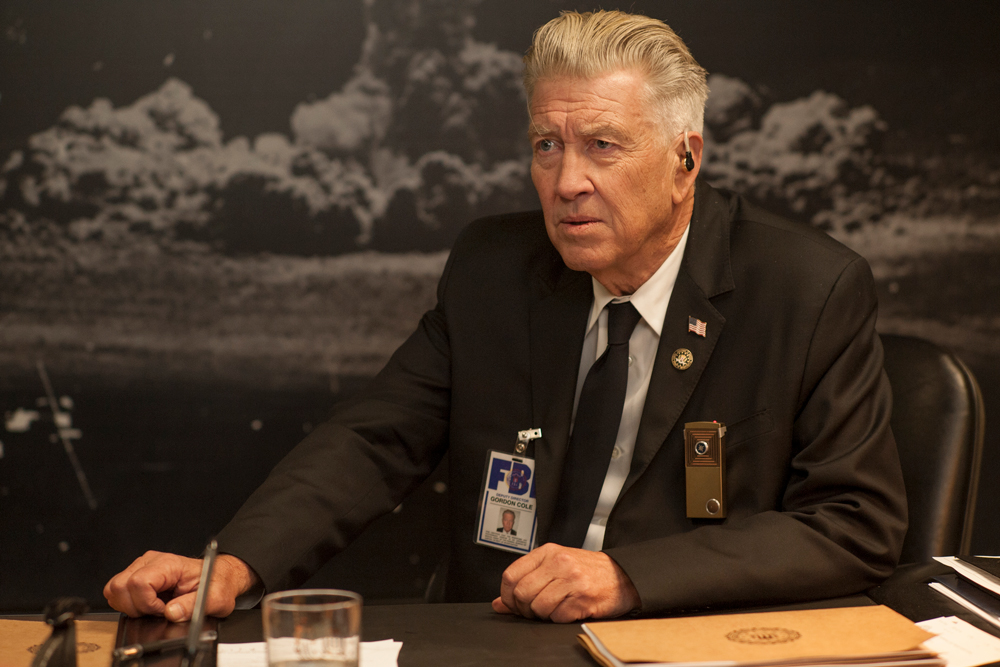
David Lynch as FBI Deputy Director Gordon Cole.
The discovery that still awaits many viewers though, is that all the time, Lynch has been drawing on the classics of art history for his trademark brand of dream-strange spirits and domestic violence. The new series is more cryptic than ever before, but there are abundant references to art history that help us reach further into the inner life of Twin Peaks – if you know how to look.
Before filmmaking, before television, Lynch was a painter. That sensibility and education pulses all through Twin Peaks: The Return, which debuted in Australia on Stan on May 22. The internet is now swimming with think-pieces about the opacity, incomprehensibility or genius of the new season, which has adapted an altogether different type of dream logic to the freaky, cherry-pie nostalgia that twenty-five years of cultural recall made us remember most about the original series.
The new season is much, much more difficult, slow and non-explanatory. It often feels wrong: it’s jagged in its rhythms and antithetical to the cliffhangers and binge-friendly storytelling beats of most prestige television. But the art history references remain.
At Pennsylvania Academy of the Fine Arts, Philadelphia in the 1960s, Lynch trained as a visual artist, but grew fascinated with the possibility of bringing his static canvasses to life. He describes a transcendent encounter with art in his youth: “A particular thrill came in 1966 – at the Marlborough Gallery, I see paintings by Francis Bacon.”
Bacon put howling, writhing figures inside clean, elegant boxes – weird bodies contained in rectilinear spaces and invisible rooms. Bacon’s Seated Figure (1961) provides the direct template for the classic image of Agent Dale Cooper inside the Black Lodge, an invisible room that serves in Twin Peaks as some kind of dark, dreamed core from which everything else arises. The composition, the deep red tone, the placement of the sofa and armchair, the seated figure: to this, Lynch adds the zebra-stripe floor, distorting the space and zapping our eyes. It’s a Bacon painting animated across twenty-four frames a second, with the occasional addition of a Venus de Mici statue, a Hellenistic marble sculpture of the Greek goddess of love Aphrodite, which has drawn much fan theorising about Lynch’s ongoing theme of silent, disappeared, abused women.
Twin Peaks: The Return now has a second Bacon-like space: a glass box in a warehouse in New York City, which seems to function as an exit portal from the Black Lodge. We see a young couple failing to notice the air in the box darken to opaque black as a white, screaming figure of terror manifests. It’s a blurred shape, very much in feel and colour like many of Bacon’s works, suggesting the painter’s screaming popes and his disturbing pictures of pale figures trapped in spindly rectangles in dark spaces.
Curator Ronald Alley of the Tate Gallery described Bacon’s “practice of enclosing [figures] in a framework like a glass or of depicting them in a box-like, windowless space” as “intensely claustrophobic – as if each was confined to his private hell.”
Lynch’s characters’ are likewise trapped in their grief, the dead separated from the living; the living’s thoughts are often of the dead, upon whom their happiness depends, and who are forever in their hearts. So the link isn’t just visual, it’s thematic: as in Bacon works, once Lynch’s people enter those invisible rooms, their identities are cut away from their bodies, drifting around realms we can’t access with our physical selves.
Spanish Master Francisco de Goya is another canonical painter of unnameable feelings whose aesthetic fingerprints are all over Twin Peaks: The Return. He’s a shadowy wellspring of much Gothic imagery in pop culture today, from the work of Alejandro González Iñárritu and Guillermo del Toro to countless horror directors. Beyond those artists, Goya’s fleshy, visceral paintings, often of the disasters of war, still resonate in today’s world of brutal militarism. With Twin Peaks: The Return, the connection is less direct that Bacon, and more linked to the feeling of horror. Like Lynch, Goya’s work shows giant men, decapitated bodies, limbs everywhere and twisted bodies coming out of the dark – an abundance of real-life gore cumulating to an indeterminate fear and wordless terror.
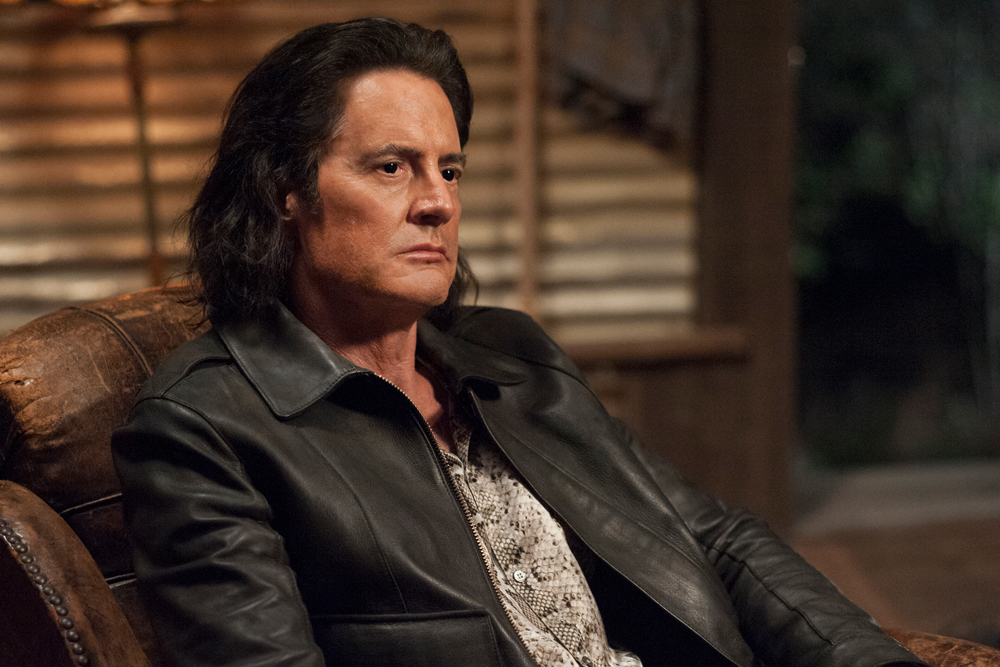
Agent Cooper’s evil doppelgänger, Mr. C.
The eighteen ‘parts’ (note that Lynch and Frost haven’t called them episodes) of the new Twin Peaks are a lot like the divided structure of Goya’s Black Paintings series, which was painted directly onto the walls of the artist’s home sometime between 1819 and 1823.
Twin Peaks’ eighteen new parts are self-contained tableaux, and likewise suggest a broader arc. Many of the scenes have that same feeling of a single frame brought to stuttering animation, as if we’re watching Lynch in his studio. In its lo-fi, textured images, with in-camera special effects (rather than CGI), Twin Peaks: The Return brings us closer to Lynch’s art school days than we’ve been in years.
Consider the decapitation in Saturn Devouring His Son, Goya’s vision of an old Greek myth of a father killing his children, as Laura’s dad, Leland, does in the original series, setting off the mystery of Laura’s death. Twin Peaks: The Return contains many mirrored decapitations. In Part 1 of Twin Peaks: The Return, a woman is found in her bed, her head disconnected from her body, in a new spate of BOB-like murders of women in their homes (BOB being the Charles Manson-like phantom who possessed the murdered Laura Palmer’s father Leland and others to do unspeakable evil back when this ‘story’ first began).
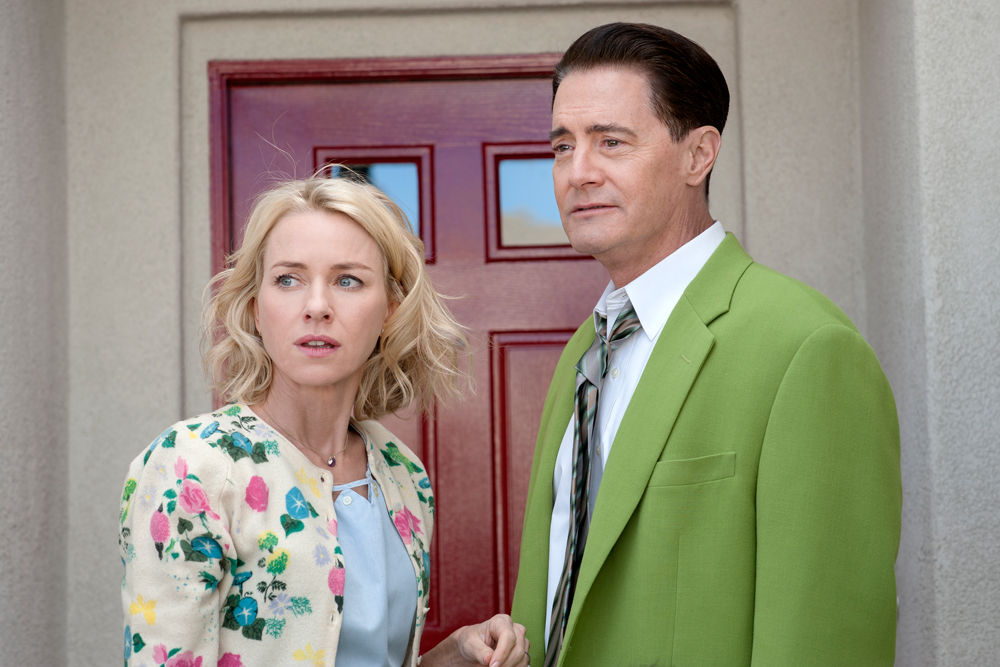
Naomi Watts as Janey-E Jones, the wife of Dougie Jones (it’s not easy being green).
In Part 4, poor old Dougie the numbskull (another doppelgänger for Cooper – Lynch loves a character to mutate across multiple identities) has his head disappear without warning. In the same episode, Cooper, stumbling about in an infantile state of vacant trauma since leaving the Lodge, gets dressed, looping his tie around his neck in such a way as to keep his head attached to his body. No literal explanation is forthcoming, but across the series, Lynch and Frost set up all kinds of subtle visual reflections – characters going through the same things across time and space, condemned to repetition and ritual.
So what does this all mean in terms of telling us a story? The art history references in Lynch’s works don’t add up to the kinds of plot-related formulas and clues we might normally crave. They’re to be understood, at best, intuitively. Like Bacon and Goya, Lynch knows that a feeling or a memory or a dream can be as real as any material object.
Is the glass box the only portal from the Black Lodge, and will the now middle-aged Laura – or her spirit – leave that way, too? Has Deputy Chief Hawk found a new portal in the deep woods with his torch, and will it lead him into the Lodge to Laura or his own form of Lodge oblivion? Now that the series has lost its centre of gravity in the town of Twin Peaks, and has opened up a global spread of evil spirits from South Dakota to New York to Argentina, are there more invisible rooms to be found? Where do Leland and Laura go when Cooper can’t see them in the red room; have they seen each other and reconciled in the Lodge? Are they even what they were? And now that Cooper’s out of the Lodge, will he encounter his furiously earth-bound evil doppelgänger – and what happens when the two doppelgängers collide?
All we know is that given Lynch’s commitment to open-endedness, the coming episodes won’t be as forthcoming as we’d hope. Lynch’s artistic innovation has been to show that television can let go of realism and plot, and reach back into history to animate some of art’s oldest concerns: grief, alienation, planes of existence separate from the material and even conscious ones, and identity separated from the body.
How many of us really understand all these essential art references buried in plain sight in Twin Peaks: The Return? Well, not so many, but it might not matter. Analysing Lynch’s art history references helps guide us toward some important themes – and visual ways of communicating those themes. But the real power of the works of Lynch and Bacon and Goya has always been that you can wrap their neurotic power around you, however best they fit you, working their strange form of magnetism on the spirit.
Talking about Bacon’s effect on him, Lynch has said, “All of us know, the painting or the photograph or the film remains the same, but it’s the viewer that is the magic part of the whole process. Every viewer who stands in front of a photo, they’re getting a different thing. I like to think of it as a circle that goes from the photo to the viewer and back to the photo, a kind of strange eternal dialogue goes, even though the photo is exactly the same.”
Throw away your intellect. Sometimes not thinking is the best method of interpretation as we dive into a mysterious obsession that we know, and which knows us. With Twin Peaks: The Return this instinct is coming through right now, like strange magic, in yet another glass box that serves as a portal between worlds.
Twin Peaks and Twin Peaks: The Return are now streaming on Stan.



